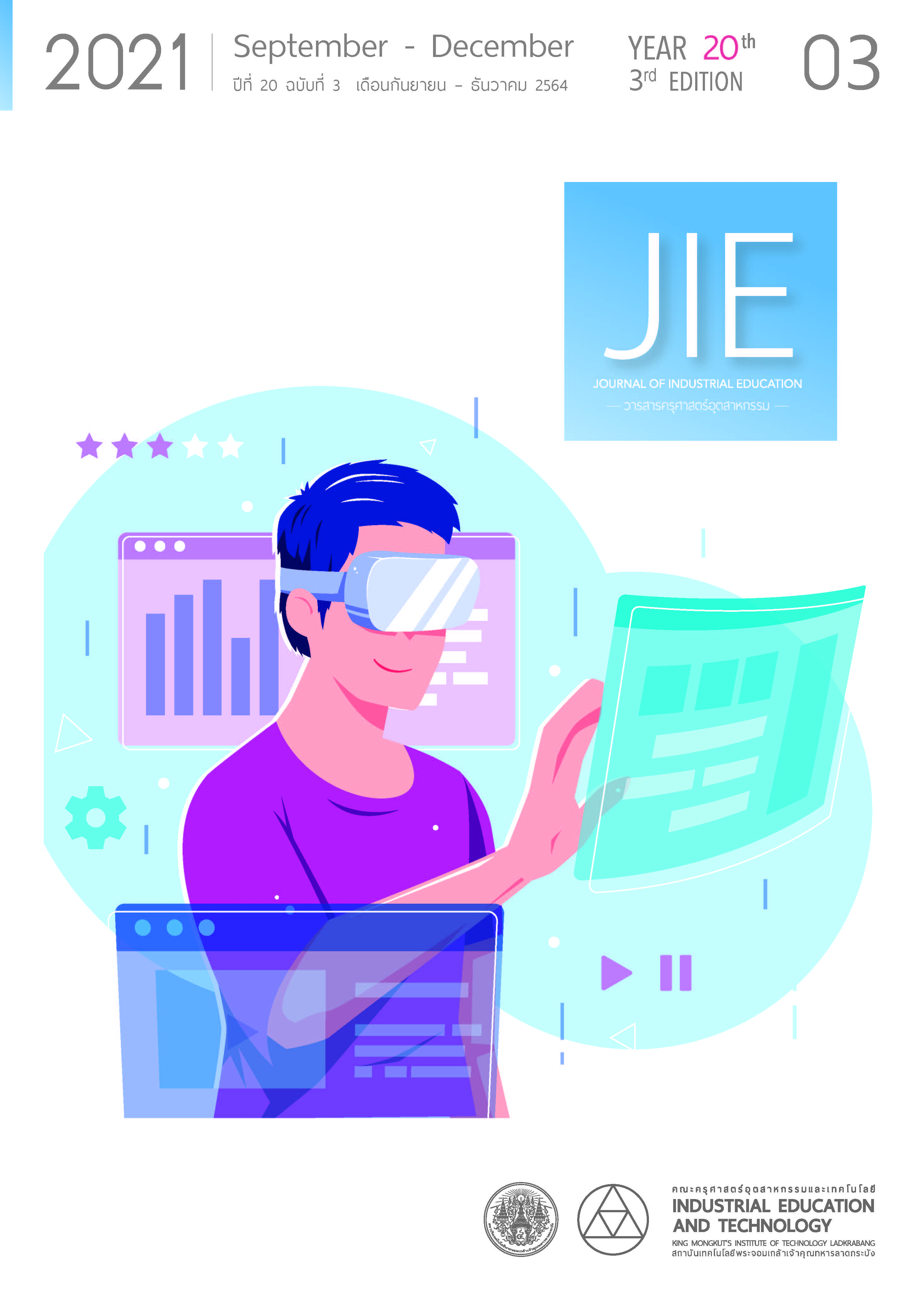FACTOR AFFECTING GUILDFORD THINKING STYLE OF UNDERGRADUATE ARCHITECTURE STUDENTS IN THAILAND PUBLIC UNIVERSITIES
Keywords:
Guildford thinking style, Divergent thinking, Convergent thinking, Architecture educationAbstract
This research objective is to study factor affecting Guildford thinking style (Divergent thinking and Convergent thinking) of architecture students in Thailand public universities. The sample of 290 architecture students who study at architecture faculty in Thailand public universities. Data was collected through Guildford thinking style test. The test that has been developed to examine students learning style that could enhance students to improve divergent thinking and convergent thinking. Guildford thinking style test has been validated with three experts in related fields, education and technology communication and architecture education. Reliability of the questionaire examined by using cronbach’s alpha is 0.941. Moreover, the questionnaires have been exammined seperately for reliability and the results of cronbach’s alpha are 0.895 for divergent thinking questions and 0.903 for convergent thinking questions. The statistics used in the analysis were mean () , frequency, and standard deviation. Pearson product moment correlation coefficient and multiple regression analysis were applied by using SPSS (Statistical Package for Social Sciences).
Research finding is that architecture students in Thailand public universities have high level of Guildford thinking style which are above average. Respondents always use divergent thinking and convergent thinking in design process. There is no significant difference between Guildford thinking style and the following aspects: sexes, architectural departments, and university location at a .05 statistically significant level, with the same direction. There is a correlation between student’s class level and convergent thinking at a .05 statistically significant level, with the low level in the same direction. Class level could forecast convergent thinkingat a .05 statistically significant level, which variance was equal to 12.6 percent.The regression equation is y = .895 +.131x.
References
Sinlarat, P. (2018). Education 4.0 is more than education. Bangkok: Chula University Press. 5-11. (in Thai)
Danaci, H. M. (2015). “Creativity and Knowledge in Architectural Education.” Procedia - Social and Behavioral Sciences. 7(174), 1309-1312.
Kumar, L., & Kumari, P. (2016). “A Study of Convergent Thinking and Divergent Thinking among Secondary School Students in relation to Ethnicity, Locale, Types of Institutions and Sex”. Journal of indian education. 41(4), 111-124.
Office of the Civil Service Commission. (2017). Creative thinking. [e-book]. Available: https://www.ocsc.go.th Retrieved February 15, 2018. (in Thai)
Jung, J. H., & Chang, D. R. (2017). “Types of creativity-Fostering multiple intelligences in design convergence talents.” Thinking Skills and Creativity. 11(23), 101-111.
Kaemkate, W. (2012). Research Methodology in Behavioral Science. Bangkok: Chula University Press. 219-222. (in Thai)
McLaughlan, R., & Lodge, J. M. (2019). “Facilitating epistemic fluency through design thinking: a strategy for the broader application of studio pedagogy within higher education.” Teaching in Higher Education. 24(1), 81-97.
Dhabharnbudr, Y. (2003). “Guideline for architectural design studio by problem solving process and inquiry based learning case stydy: faculty of arhchitecutre, Khon kaen university.” Master’s thesis, Chulalongkorn university, 84. (in Thai)
Huber, A., Leigh, K., & Tremblay, K. (2012). “Creativity processes of students in the design studio.” College Student Journal. 46(4), 903-913.
Ciravoglu, A. (2014). “Notes on Architectural Education: An Experimental Approach to Design Studio.” Procedia - Social and Behavioral Sciences. 6(152), 7-12.
Downloads
Published
How to Cite
Issue
Section
License
Copyright (c) 2021 Journal of Industrial Education

This work is licensed under a Creative Commons Attribution-NonCommercial-NoDerivatives 4.0 International License.
"The opinions and contents including the words in papers are responsibility by the authors."
"ข้อคิดเห็น เนื้อหา รวมทั้งการใช้ภาษาในบทความถือเป็นความรับผิดชอบของผู้เขียน"



